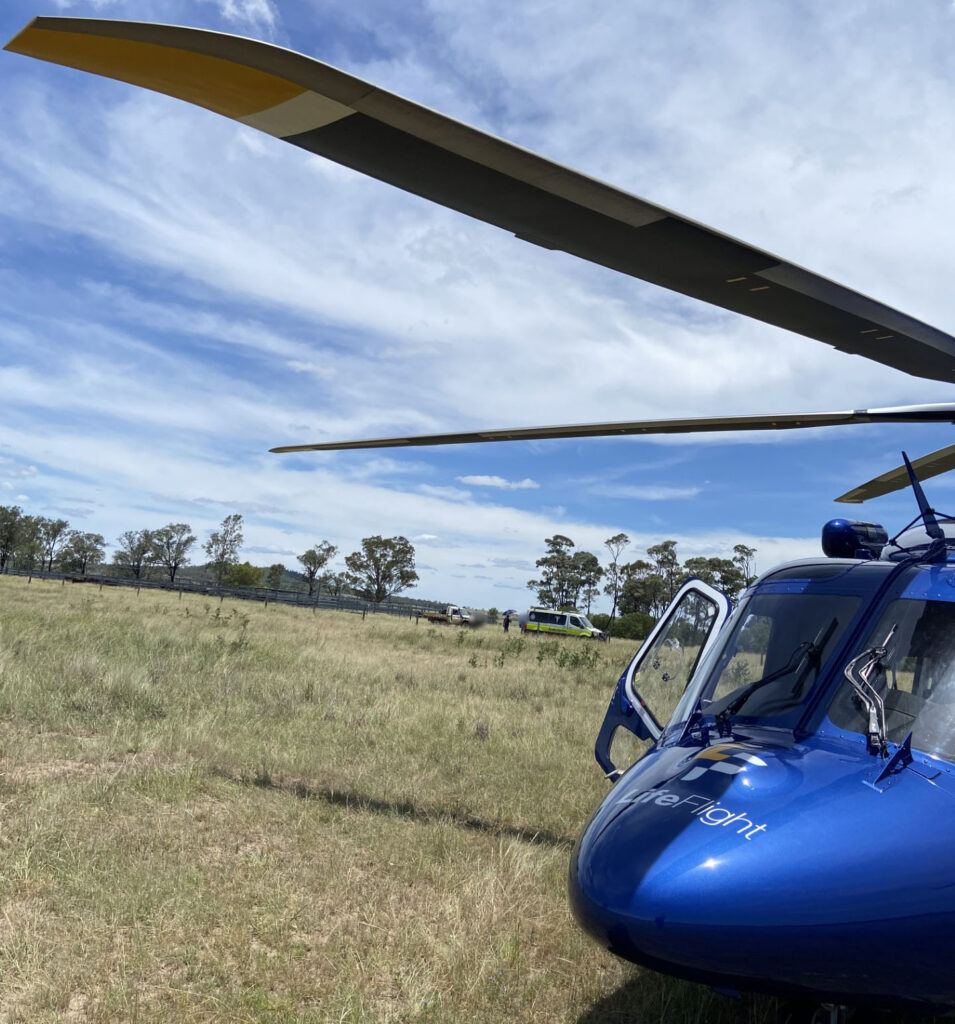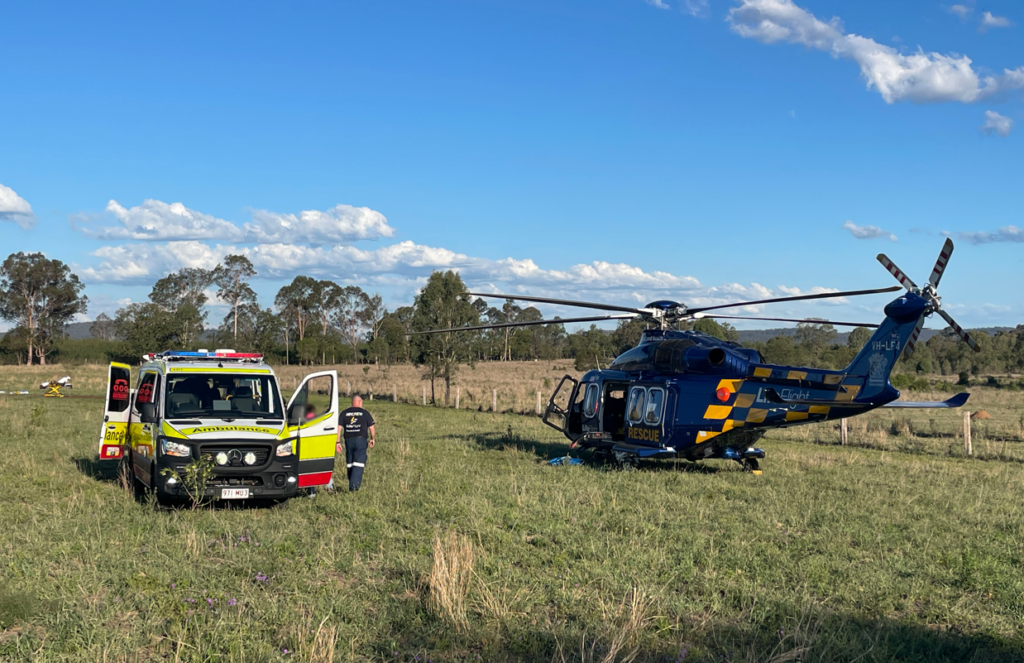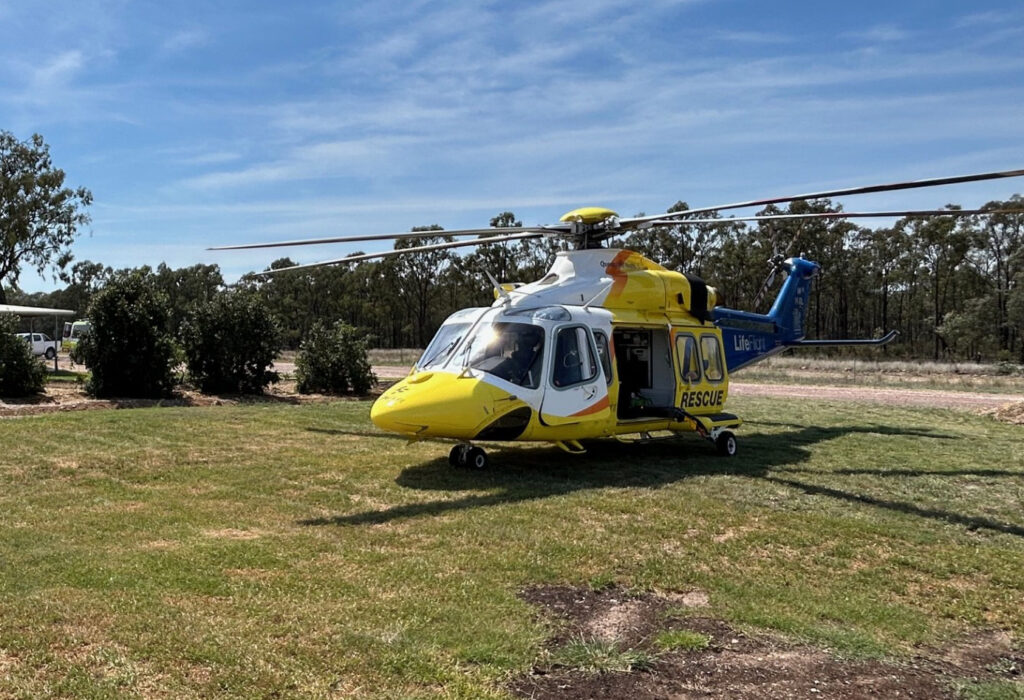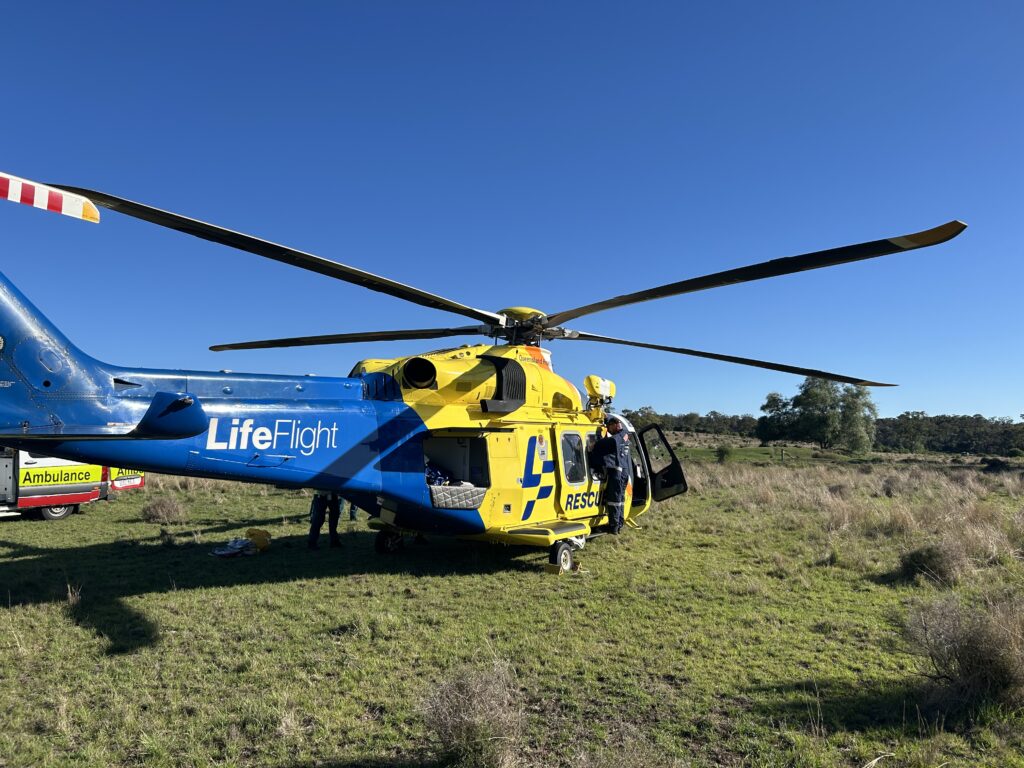Key Stats Mt Isa: FY25
- People helped – 127 (up 10% on FY24)
- 220 flying hours (up 38% on FY24)
- 145 missions (up 30% on FY24 – includes training)
- 8,497 people helped across the LifeFlight network (up 3.9% on FY24)
The Mount Isa LifeFlight aeromedical crew helped a record number of people in FY25, new data released this week reveals.
Crews in the North West clocked up 220 flying hours, to airlift bogged campers, people thrown from horses and motorists injured in car crashes.
They airlifted 10 per cent more patients, flew 30 per cent more missions and recorded 220 flying hours over the 12-month period.
The number contributed to another record year for the aeromedical organisation, with 8,497 people helped in FY25 – 3.9 per cent higher than the previous year.
LifeFlight’s fleet of helicopters, air ambulance jets and specially trained medical teams, including LifeFlight critical care doctors, flight nurses and paramedics, helped patients with a range of illnesses and injuries.
The Mount Isa helicopter’s missions covered vast distances.
In December the crew flew for more than six hours and 300 nautical miles over the Australian desert to rescue a couple and their two dogs stranded in croc-infested country after their 4WD was washed away in floodwaters.
In April they flew more than 400km from Mt Isa to airlift six campers whose vehicles were bogged in mud northeast of Burketown.
The highly complex mission involved multiple airlifts as well as refueling and dropping water and supplies to the stranded campers.
In June the crew completed multiple airlifts of people injured by horses, including a man thrown from a horse at a rodeo.
People helped by mission/injury type:
- Inter-facility transfer – 76 (53) +43%
- Motor vehicle accidents – 7 (10) -30 %
- Search and rescue – 6 (16) -62%
The Mount Isa base will celebrate a major milestone later this year when the new joint LifeFlight-Royal Flying Doctor Service (Queensland section) base opens, bringing a whole new capability to the region.
LifeFlight will house a new AW139 at the base enabling the service to go farther and faster.
LifeFlight Chief Operating Officer Lee Schofield said the Mt Isa crew completed some of the most challenging missions due to the terrain and sheer distances involved.
“The North West is larger than the size of New Zealand so that does make for unique missions, but the Mt Isa team always rises to the challenge as evidenced by some spectacular rescues in the past year,” Mr Schofield said.
“The new AW139 will go some way to improving our response and is a big win for the region.”
He said FY25 was the most significant in the not-for-profit’s history.
“Every hour we are called upon to airlift Queenslanders in distress, whether its hikers stranded on mountaintops, capsized boaties kilometres out to sea, or people needing urgent medical attention to major hospitals,” Mr Schofield said.
“It’s a mission our aeromedical crews carry out with great dedication with the goal of bringing equity in healthcare no matter where or when people need us.
“My sincere thanks go to all LifeFlight’s staff for the incredible work they do. Team effort and coordination across all our work groups is key to providing the world class standard of care and ensuring equity of health care in regional communities.
“To continue to meet this objective, we’re evolving our organisation with the best aircraft, advanced bases and facilities, and cutting-edge training unmatched in our region.”
Mr Schofield said LifeFlight’s growth was possible due to the support from the community, donors and philanthropy, government and new commercial partnerships.
“This generosity and support enable LifeFlight to keep helping more people each year as demand for our services continues to increase,” he said.
LifeFlight Medical Director Dr Jeff Hooper, said the breadth of the missions demonstrated the capability of the aeromedical crews to perform complex procedures under immense pressure.
“Our aeromedical teams provide advanced care under extremely challenging circumstances, whether that is treating patients on scene after serious car crashes, stabilising patients mid-air, rescuing people stranded in the ocean, or winching down a paramedic to hikers stranded on the side of a cliff face,” Dr Hooper said.
“This rapid aeromedical intervention is often the difference between life and death and comes after our crews undertake intensive training at the LifeFlight Training Academy, which prepares them for any situation they may face in the field.”
Dr Hooper said a key part of LifeFlight’s mission was developing and delivering free First Minutes Matter emergency trauma training workshops.
“This incredible initiative helps to build community resilience by giving participants the practical skills to manage life-threatening events such as motor vehicle accidents, farming incidents, stroke and snake bites.”
LifeFlight’s helicopter crews, operating from bases on the Sunshine Coast, Bundaberg, Mount Isa, Toowoomba, Roma, and Brisbane, clocked up 3,732 missions in FY25, which included airlifting injured motorists, patients with cardiac problems, seafarers, hikers, and farmers injured by animals.
The number of overall missions was 10.5 per cent higher than the previous financial year while flight hours also increased by 15 per cent to 5,940.
Much of LifeFlight’s aeromedical work involved Inter-Facility Transfers (IFT). This ensures all communities have equal access to the best possible healthcare, no matter where they live.
Since taking to the skies 46 years ago LifeFlight has helped more than 90,000 people.
LifeFlight helicopters contribute to the Queensland Emergency Helicopter Network via a 10-year service agreement with the Queensland Government.
For more information on First Minutes Matter visit First Minutes Matter Program – LifeFlight.










